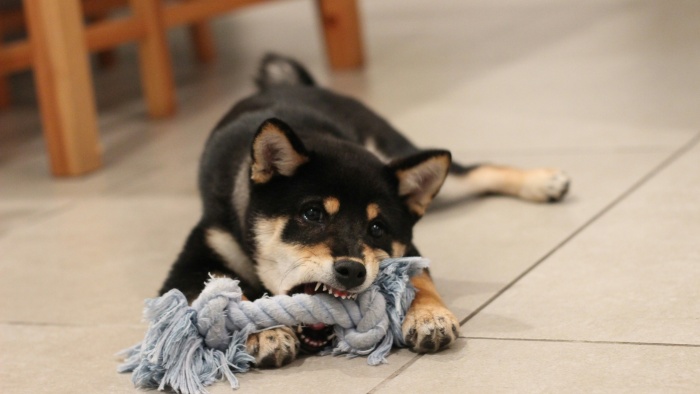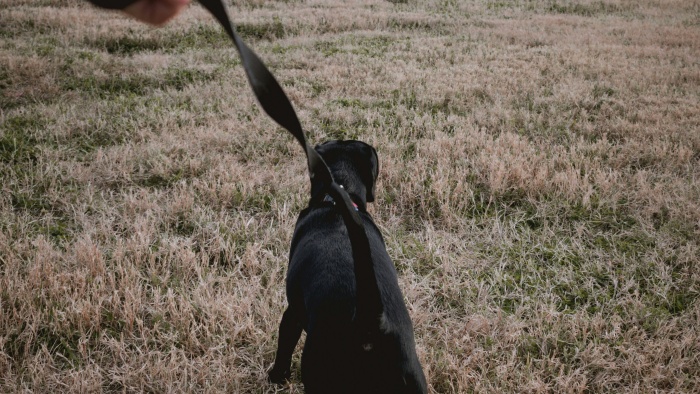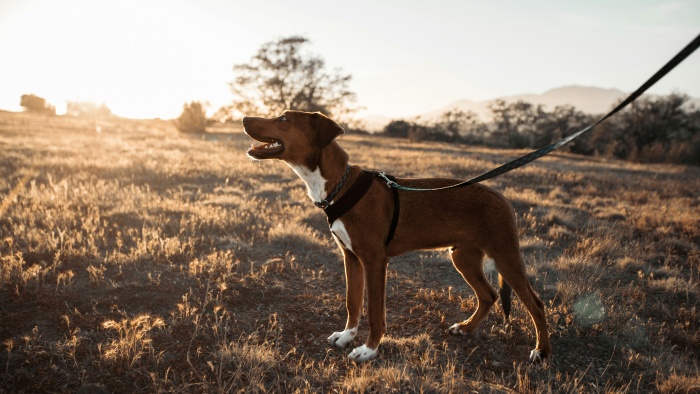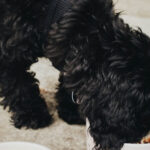Dog Biting Leash:How To Solve

With the issue of dog biting leash becoming increasingly prevalent, it’s noteworthy that, at most, only a quarter of all dogs undergo routine training sessions. This results in a vast number of canines navigating life without any formal introduction to proper conduct.
Owning a dog can bring immense joy and companionship into your life. However, if you’re faced with a situation where your furry friend is consistently destroying leashes by chewing on them, you’re likely in search of effective solutions.
Dealing with a dog that persistently bites and chews through their leash can be both costly and exasperating. Over time, this problematic behavior may solidify, making it a challenging habit to break.
Why Addressing Your Dog’s Leash Biting Issue is Crucial
When you notice your dog gnawing on its leash, you might be tempted to overlook the behavior. To you, a leash might seem like a replaceable item, hardly worth fretting over.
“It’s not a big issue!” You reassure yourself, thinking that purchasing a new leash is a simple fix.
However, allowing this behavior to continue unchecked can lead to:
- Significant financial costs over time
- A strained relationship with your furry companion
- The development of additional undesirable behaviors
In essence, while the durability of your dog leashes might not be your primary concern, permitting leash biting to go on is certainly not advisable.
This habit can evolve into your dog gnawing on various other objects around your house or vehicle. More importantly, it’s crucial to discourage any form of biting to prevent your pet from potentially harming a stranger.

Implementing training for your dog is essential in establishing clear boundaries, helping them comprehend what behaviors are acceptable and which are not. It’s about more than just preserving leashes; it’s about ensuring their safety and fostering a positive environment for everyone involved.
Don’t engage in a tug of war
There are myriad reasons why your dog might be engaging in leash biting. However, a critical response you should avoid is engaging in a tug-of-war by pulling back.
Often, this behavior is rooted in play. Reflect on the variety of toys your dog has at their disposal. Whether it’s a plush toy or a simple piece of rope, your dog is constantly encouraged to chew, rip, and pull throughout their playtime.
Unless specifically trained to differentiate, your dog might not see the leash as anything other than another toy. Therefore, resisting the urge to pull back is essential, especially if that’s your initial reaction.
By pulling back, you might inadvertently confirm to your dog that this is a playful interaction and that you are a willing participant in their game. This misunderstanding can strengthen behavior, making it harder to correct in the future.

Choose superior leashes
Just as you carefully select a new dog collar, it’s worthwhile to invest in a higher-quality leash.
Opting for a leash made from superior materials or even one that’s tailored specifically for your dog can significantly enhance its value to you.
When you find yourself more attached to this particular leash, compared to others, your motivation as the owner to curb the leash biting habit increases. This shift in perspective can play a crucial role in actively seeking and implementing strategies to prevent your dog from damaging their leash.
Reinforce desired behaviors
When grappling with how to halt your dog’s leash biting habit, it’s crucial to reinforce the behaviors you wish to see. Avoid resorting to punishment for unwanted actions.
This principle is a cornerstone of nearly all puppy training methods.
Dogs are far more responsive to positive reinforcement, showing better reactions to rewards rather than reprimands.
Therefore, during walks, if your dog begins to nibble on the leash, you should:
- Come to a halt.
- Use a treat to shift her focus from the leash.
- Refrain from immediately rewarding her with the treat.
- Prompt her to perform a command, like sit, stay, or look.
- Reward her with the treat for complying with the command.
- Repeat these steps as necessary.
Adhering to these guidelines diligently teaches your dog that positive behavior will be rewarded.
By not giving her a treat immediately upon ceasing to chew or pull on the leash, you prevent her from associating the reward with the act of biting.
Instead, she learns that the reward is for executing the commands you’ve taught her, such as sitting, staying, lying down, or other trained behaviors.
Begin behavior modification early
Embarking on leash training for a puppy that has a penchant for biting the leash is most effective when initiated promptly.
However, putting this into practice can occasionally present challenges. Perhaps the issue has already begun to manifest, and it’s only now that you’ve come to the realization that behavior modification is imperative.
Nonetheless, in all aspects of animal training, the optimal strategy consistently involves beginning training and the reinforcement of positive behavior as soon as possible, rather than attempting to correct negative behavior after it’s become entrenched.
This early intervention is crucial, as it sets the foundation for a well-behaved adult dog, reduces the likelihood of future misconduct, and strengthens the bond between pet and owner by establishing clear expectations and consistent communication from the start.
Provide engaging alternatives for tugging and biting
On occasion, the reason behind your dog’s interest in biting the leash could be a lack of sufficient stimulation.
It’s important to ensure that you have a variety of tugging and biting toys available at home. These toys should be engaging enough to satisfy your dog’s need for play and stimulation before heading out for a walk.
Some of these toys are designed with hidden treats, requiring your dog to put in extra effort to access the reward. This strategy can be particularly effective as it might render a plain leash unappealing in comparison.
Ensuring your dog has access to these engaging toys can redirect their biting tendencies away from the leash, making walks more enjoyable for both of you.
It also encourages problem-solving and persistence, as your dog learns to work for their treats, further reducing the likelihood of leash biting out of boredom or excess energy.
Support your dog’s well-being
Frequently, leash biting arises from a place of frustration. This could be the result of your puppy feeling stressed or being restricted from engaging in activities they’re drawn to, like greeting another dog or exploring the smells of the outdoors.
If your dog is exhibiting signs of frustration leading to biting, taking steps to alleviate their stress is crucial. This can include:
Modifying your walking route to manage encounters with other dogs, either increasing or decreasing them based on your dog’s comfort and behavior.
Establishing a consistent routine that dictates when and how they’re permitted to explore and engage with their environment during walks.
Positively reinforcing calm and desirable behaviors, such as refraining from barking at other dogs.
The cornerstone of these strategies is the reinforcement of positive behavior. Recognizing and rewarding good conduct not only encourages your dog to repeat these behaviors but also strengthens the bond between you and your dog, creating a more harmonious walking experience for both.
This approach not only helps in managing leash biting but also in fostering a well-adjusted, happy pet.

Nurture your dog’s engagement
Instead of being caught up in what your dog isn’t allowed to do, consider the possibility that they’re becoming excessively stimulated by the opportunities available to them.
For instance, if you return from a demanding day at work and immediately venture out for a walk, your dog’s excitement levels might surge. The bombardment of new smells, sounds, and tactile sensations can make them unusually spirited.
Under these circumstances, it’s essential to interact with your dog more frequently than just during walk times. Engage in play sessions with them before you leave, upon your return, and even before settling down for the night.
Ensuring your dog receives ample attention and interaction throughout the day, not limited to walking sessions, can lead to a more composed demeanor when on the leash. This approach not only aids in mitigating overstimulation but also enriches your dog’s daily life, providing them with a balanced routine that caters to both their physical and emotional needs.
Select the ideal dog leash for your companion
Walks represent a deeply rewarding aspect of dog ownership, offering a prime opportunity for bonding, engaging with, and sometimes rewarding your furry friend.
However, if you’re grappling with a dog biting leash issue, it’s critical to address and rectify this undesirable behavior promptly. Key strategies include halting the behavior at its inception and consistently rewarding the actions you wish to see perpetuated.
Having acquired insights on mitigating dog biting leash concerns, consider elevating your gear with our dog leashes. These leashes are not only stylish but are specifically designed to enhance the leash training experience for both you and your dog.
Their durable construction ensures longevity, even in the face of teething or habitual chewing, making them an excellent investment for owners looking to foster good leash manners in their pets.
FAQs
What can I do if my dog starts leash biting in the middle of a walk?
If your dog starts biting their leash during a walk, immediately stop moving. Distract them with a command or a treat to shift their focus away from the leash. Once they’ve obeyed a command like “sit” or “look at me,” reward them with the treat. This helps teach them that positive behaviors are rewarded, not the act of leash biting.
How can I prevent my dog from seeing the leash as a toy?
Ensure your dog has a clear distinction between their toys and the leash. Regularly engage them with designated tugging and biting toys, especially before walks, to satisfy their need for play and stimulation. This makes the leash less appealing as a toy and more as a tool for walks.
Is it too late to start leash training if my dog is already displaying leash biting behaviors?
It’s never too late to start or modify training. Begin reinforcing positive behavior immediately, regardless of your dog’s age or how entrenched the biting habit has become. Consistency and patience are key in teaching them the desired behaviors.
How do I keep my dog stimulated without relying solely on walks?
Engage your dog in various activities throughout the day, not just during walks. Play games, provide puzzle toys, and set aside time for training sessions. This variety helps manage their energy levels and keeps them mentally stimulated, reducing the likelihood of leash biting out of boredom or overexcitement.
What should I look for in a leash to minimize biting?
Choose a durable, high-quality leash that’s designed to withstand biting and chewing. Materials like thick nylon or leather can be more resistant to damage. Additionally, consider leashes with a less appealing texture for chewing or those specifically marketed as chew-resistant to discourage biting habits.
